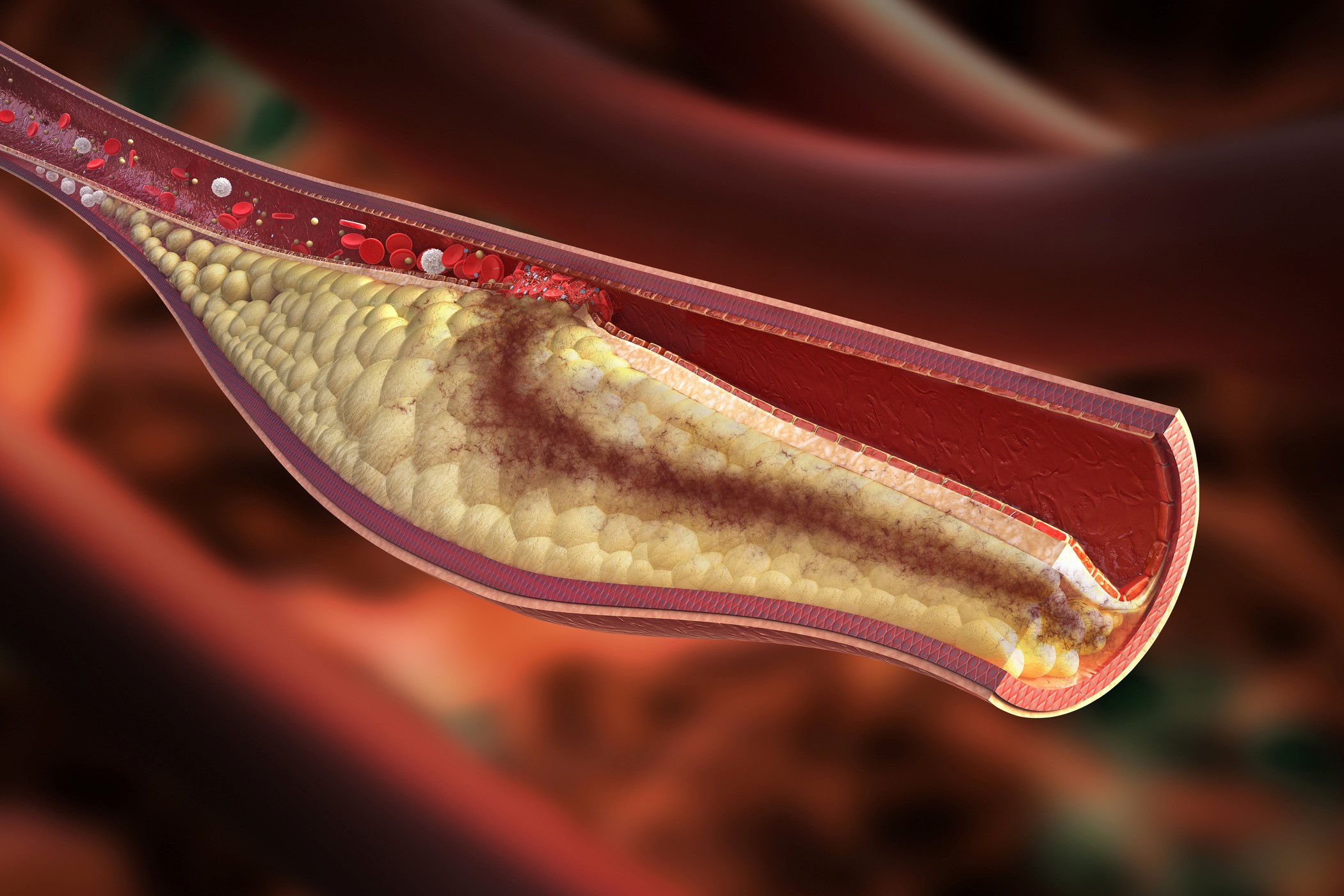
Atherosclerosis: what it is, what causes it and how to treat it
Atherosclerosis (more often known in the lay world as arteriosclerosis) is a pathological condition characterised by changes in the wall of the arteries, which lose their elasticity due to the accumulation of calcium, cholesterol, inflammatory cells and fibrotic material
What is atherosclerosis?
Stiffening of the arteries is a phenomenon associated with the accumulation of pathological components within the vascular walls.
One of the most common forms of this pathology is atherosclerosis, which is characterised by the formation of wall plaques containing amorphous material, cholesterol, smooth muscle cells, inflammatory cells and cells from the blood.
If the plaque protrudes into the vessel lumen, it can even obstruct blood flow within it.
A rupture of the plaque itself, which is usually lined with a thin fibrous cap and endothelial cells, can lead to thrombosis and complete obliteration of the vessel lumen, resulting in an interruption of blood flow.
Once established, atherosclerosis appears as an irreversible and potentially ever-expanding process: an appropriate lifestyle and treatments aimed at controlling diabetes and hypertension, as well as reducing cholesterol, can prevent plaque formation and slow down the worsening of ongoing atherosclerosis.
What are the causes of atherosclerosis?
Atherosclerosis is commonly associated with ageing.
However, high blood cholesterol levels, high blood pressure, cigarette smoking, diabetes mellitus and family history can also promote its occurrence at a young age.
A high-fat diet, excessive alcohol consumption, insufficient physical activity and being overweight can all contribute.
What are the symptoms of atherosclerosis?
Generally, atherosclerosis itself does not cause symptoms until it impairs the flow of blood within the arteries.
The narrowing of the arteries and their occlusion, produced by the formation of a thrombus, leads to ischaemia and infarction in the area downstream of the arteries.
The symptoms of ischaemia and infarction will be different depending on whether the atherosclerosis is localised in the coronary (angina, myocardial infarction), cerebral (stroke or TIA), intestinal, renal or peripheral (lower limb obliterative arteriopathy) territory.
How is atherosclerosis prevented?
To prevent atherosclerosis, it is important to lead a healthy lifestyle characterised by a healthy, balanced diet low in animal fats and adequate physical activity.
It is also essential not to smoke and to limit alcohol consumption.
Diagnosis
Atherosclerosis is not necessarily associated with objective signs detectable at a medical examination. In the event of narrowing of a large arterial vessel (e.g. carotid artery), turbulence of the blood flow within it may occur and this results in a murmur, which can be perceived by the doctor with a stethoscope.
However, other investigations are subsequently necessary, such as:
- echo-Doppler
- angiography
- MR angiography
- CT angiography
Treatment
In the case of arterial stiffening, it is essential to correct all cardiovascular risk factors, also acting through lifestyle modifications.
In particular, it is necessary to
- avoid foods rich in fat, especially those of animal origin;
- limit alcohol consumption;
- exercise regularly. For normal-weight individuals 30-45 minutes at least three times a week may be sufficient, while higher levels are necessary for overweight individuals;
If lifestyle measures are insufficient, the doctor may prescribe medication:
- to reduce cholesterol levels (particularly statins)
- to slow down the progression of atherosclerosis (ACE inhibitors, some statins)
- to reduce blood pressure (ACE inhibitors, beta-blockers, calcium channel blockers and diuretics)
- to control specific diseases such as diabetes or to alleviate disabling disorders such as leg pain (typical of claudication intermittens)
- to reduce the risk of intravascular blood clot (thrombus) formation (anti-platelet agents)
In the case of severe atherosclerosis with hypoperfusion or infarction of major organs, operations of
- angioplasty with stents
- endarterectomy
- bypass
If an artery is blocked by a blood clot (thrombus) and cannot be mechanically unblocked, drugs can be used to dissolve it (thrombolysis), which are administered intravenously.
Read Also:
Emergency Live Even More…Live: Download The New Free App Of Your Newspaper For IOS And Android
Defibrillator: What It Is, How It Works, Price, Voltage, Manual And External
The Patient’s ECG: How To Read An Electrocardiogram In A Simple Way
Signs And Symptoms Of Sudden Cardiac Arrest: How To Tell If Someone Needs CPR
Inflammations Of The Heart: Myocarditis, Infective Endocarditis And Pericarditis
Quickly Finding – And Treating – The Cause Of A Stroke May Prevent More: New Guidelines
Atrial Fibrillation: Symptoms To Watch Out For
Ischaemic Heart Disease: What It Is, How To Prevent It And How To Treat It
Family Hypercholesterolemia: What It Is And How To Treat It
What Is Cholesterol And Why Is It Tested To Quantify The Level Of (Total) Cholesterol In The Blood?
Ischaemic Heart Disease: Chronic, Definition, Symptoms, Consequences


